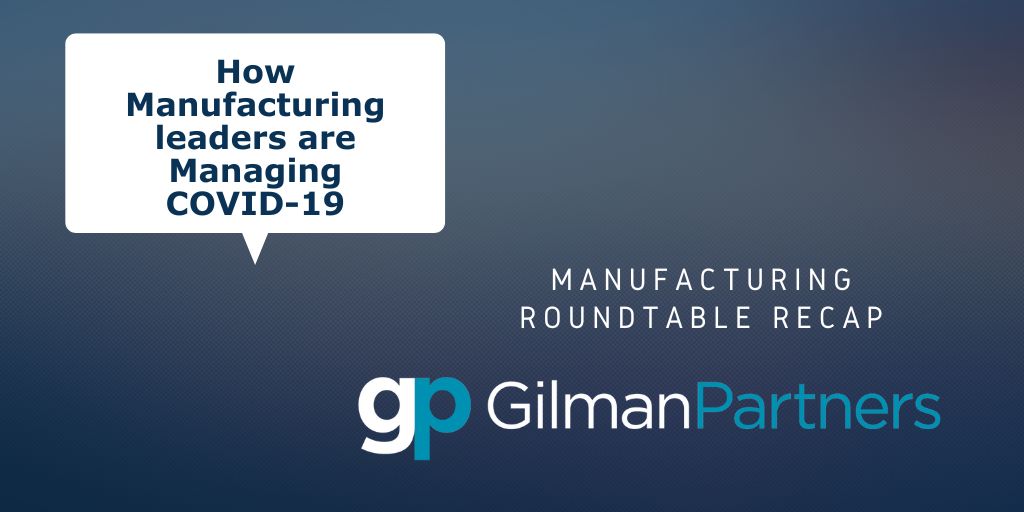Gilman Partners hosted a virtual roundtable with manufacturing operations leaders in Ohio, Kentucky, Michigan, Indiana and Missouri to talk about their reactions to the COVID-19 crisis, their plans for keeping workers healthy, and how they view the path forward. Here were some of the key takeaways from the discussion:
- In addition to taking temperatures and distancing workers on the floor, manufacturers are taking additional precautions to keep workers safe. Roundtable participants noted their organizations are requiring employees wear masks and/or gloves, increasing cleaning/disinfecting, staggering breaks to reduce employee interaction, and making handwashing after breaks mandatory. One participant noted his organization has installed new devices on doors to allow them to be opened with forearms instead of with hands.
- One organization has reworked manufacturing procedures to ensure workers are six feet apart. As a result, they have had to focus on re-training employees.
- Many participants spoke about the plans they have put in place in case an employee contracts the virus and the organization needs to shut down or shift gears for a period of time. Some are using technology and others have created a simple phone chain to be able to reach all front-line workers.
- Several manufacturers have increased pay for workers, but they have not referred to it as “hazard pay” because they want employees to feel safe with increased safety measures. Instead, is referring to the salary bump as “recognition pay.”
- One organization shared that it has had great results keeping workers employed and engaged because of SharedWork Ohio, a voluntary layoff aversion program. (You can learn more about this program on the SharedWork Ohio page on the Ohio Jobs and Family Services website.)
- To reduce costs, some organizations are ramping up their process improvement/waste reduction focus. There also is a renewed focus on inventory reduction to address costs
- Several of the organizations have worked to show appreciation for their employees during these difficult times. Some have provided complimentary meals and one is getting ready to host a (socially distanced) employee parade to cheer for and celebrate the workers who have kept operations up and running.
- Employee communication was top of mind for several roundtable participants. Organizations are using signage, newsletters (both print and electronic), and videos to share messages – both serious and lighthearted.
There still remains a great deal of uncertainty about what the next several months will bring. While some organizations are making the decision to push forward at full speed, others are holding back, listening to employees and taking a slower phased approach to the re-start.




